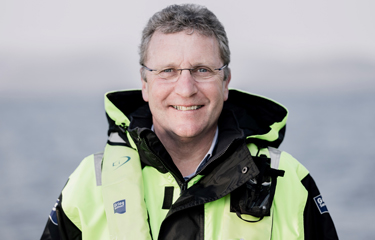Grieg Seafood Group posted lower operational earnings before interest and taxes (EBIT) of NOK 44 million (USD 4.9 million, EUR 4.2 million) before fair value adjustment of biomass for the second quarter of this year, down from the NOK 47 million (USD 5.3 million, EUR 4.5 million) achieved in the corresponding period of 2020.
Grieg’s EBIT per kilogram for the period was NOK 2.40 (USD 0.27, EUR 0.23), the same as a year previously.
The Bergen, Norway-headquartered salmonid producer reported that downgrades and a low average harvest weight and harvest profile impacted price achievement in its Finnmark farming region by NOK 41 million (USD 4.6 million, EUR 3.9 million), while operational costs including write-downs related to infectious salmon anaemia (ISA) challenges impacted its Newfoundland, Canada operations by NOK 45 million (USD 5 million, EUR 4.3 million). There was, however, strong production and good price achievement in its British Columbia, Canada (B.C.) activities.
GSF harvested 17,812 metric tons (MT) of gutted-weight salmon in the quarter, which was 12 percent less than in the corresponding period of last year. Regionally, Rogaland provided the most fish with 7,783 MT, followed by B.C. (5,249 MT), and Finnmark (4,780 MT).
Meanwhile, the group has entered into a sales purchase agreement with Scottish Sea Farms for the sale of its Shetland operations for GBP 164 million (USD 225.6 million, EUR 192.6 million). The transaction is expected to close within the fourth quarter, depending on processing time with relevant competition authorities and some other customary closing conditions.
According to GSF’s Q2 report, the transaction will leave it in “a strong financial situation” and “provide room to engage in growth initiatives in Norway and Canada” in line with its long-term business strategy.
Total revenues during the three-month period amounted to NOK 1.12 billion (USD 125.6 million, EUR 107.3 million), a decrease of 4 percent from Q2 2020, while farming costs increased due to site-specific conditions, winter ulcers, ISA, and higher costs recognized as abnormal mortality of biological assets.
Grieg CEO Andreas Kvame said that Grieg took new and important steps toward a post-pandemic recovery in the quarter.
“The market is getting better, prices are increasing, and biology is improving across the regions. At the same time, we still experienced some bumps in the road. I am not satisfied with an EBIT of NOK 44 million,” he said. “British Columbia was a highlight, with stable biological control for yet another quarter, coupled with high prices in a strong U.S. market. Rogaland delivered a satisfactory result, while Finnmark remained impacted by remnants of the challenging biology from last winter.”
Kvame said several actions are being taken to avoid similar severities during future winters, from changes in fish transferal and new vaccine strategies to more post-smolt and VAP capacity. In Newfoundland, to increase the chances of optimal biological conditions in the sea, GSF has postponed the transfer of its fish to sea until spring 2022.
“Beyond this postponement, the project is on track, with millions of fish currently growing healthy and well in the freshwater facility. The potential for Newfoundland remains in the medium and longer term, underpinned by the strong and growing U.S. salmon market next door,” he said.
In B.C., Grieg Seafood BC has submitted applications to Canadian regulators for additional salmon farms in the Clio Channel, in partnership with the Tlowitsis First Nation.
GSF’s sales revenues for the first half of 2021 reached almost NOK 1.8 billion (USD 201.9 million, EUR 172.4 million), down from NOK 2.3 billion (USD 258 million, EUR 220.2 million) in H1 2020.
Its harvest volume for the six-month period was down 5,060 MT to 31,395 MT. Together with increased farming costs, this contributed to an EBIT before fair value adjustments of biological assets of NOK 28 million (USD 3.1 million, EUR 2.7 million), down from NOK 264 million (USD 29.6 million, EUR 25.3 million). This was equivalent to an EBIT per kilogram of NOK 0.90 (USD 0.10, EUR 0.09), compared with NOK 7.20 (USD 0.81, EUR 0.69) in H1 2020. Profit before tax for the year to date was NOK 282 million (USD 31.6 million, EUR 27 million), reversing a loss of NOK 350 million (USD 39.3 million, EUR 33.5 million) reported for the first six months of last year.
For the third quarter of 2021, GSF expects a harvest volume of 21,700 MT, with Rogaland producing 7,000 MT, Finnmark 10,000 MT, and B.C. 4,700 MT. The group maintains its 2021 harvest volume target of 80,000 MT, and a long-term harvest volume target of 130,000 MT by 2025.
It also anticipates an even stronger demand response when Europe’s foodservice market gradually normalizes, as an increasing number of countries ease COVID-19 restrictions and vaccination programs progress.
Moving forward, Grieg said it expects a reduction in its salmon supply, mostly driven by negative biomass growth in Americas. Despite this, Kvame issued a cautiously optimistic sentiment on the company’s future prospects, which he said was reflected in an upward revision of the forward price quotes on international salmon exchange Fishpool to NOK 58 (USD 6.51, EUR 5.56) per kilogram for Q3 2021, and NOK 62 (USD 6.96, EUR 5.94) per kilogram for Q4 2021 and for 2022.
Photo courtesy of Grieg Seafood







